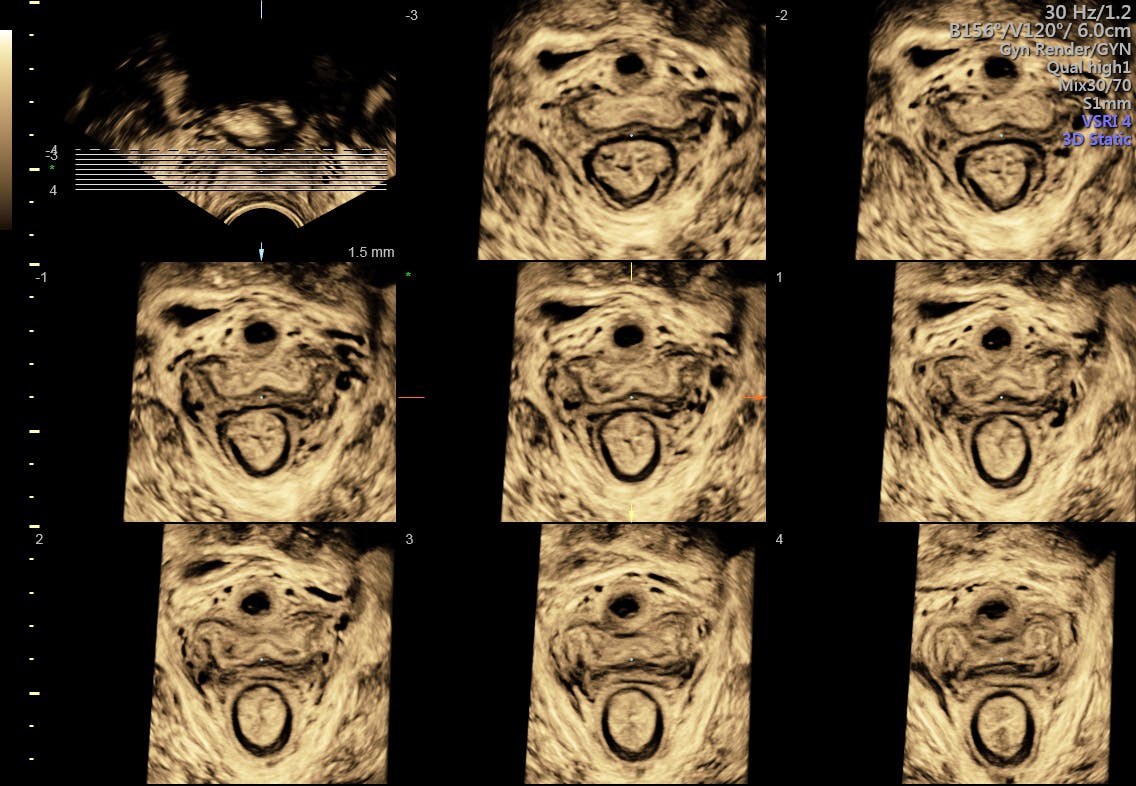Pelvic pain is a common yet unspecific symptom for many patients. Thankfully, ultrasound can provide details in diagnosing and treatment planning for a range of gynecologic and pelvic floor issues. This collection of frequently asked questions covers the ethics of pelvic exams and how ultrasound can aid in providing urogynecologic care for patients.
- How does ultrasound help uncover the cause of pelvic pain in the ER? Pelvic pain has a long list of possible causes, especially for patients presenting in the emergency room. Ultrasound is part of a complete workup to help uncover the reason for a patient's pain. Learn more about where ultrasound "fits" in a larger workup and what information can be gained in an acute care setting.
- Why is it important to obtain consent before pelvic exams? Although pelvic exams yield essential information for doctors, they can be triggering for some patients, such as those who are transgender or who have experienced sexual assault. In many states, it's not legally required to obtain consent, but it helps build trust with patients and ensure they're actively involved in their care.
- Where can you find pelvic floor resources and online learning for your practice? Pelvic floor disorders can affect individuals throughout their lives, and ultrasound is a noninvasive, low-cost way to detect these common issues. Explore online resources that might help strengthen your skills when it comes to pelvic floor imaging with ultrasound.
- What markers should you look for in a pelvic inflammatory disease ultrasound scan? Transvaginal ultrasound may be key to diagnosing pelvic inflammatory disease (PID). Discover what specific PID markers you might find during an ultrasound exam.
- What is a trauma-informed pelvic exam? Patients with a history of sexual abuse may be uncomfortable with pelvic exams. It's important to create a safe space and a trusting doctor/patient relationship so these patients return for routine gynecologic care. Learn more about trauma-informed pelvic exams and how to provide a safe environment for this patient population.
- What is the role of 3D ultrasound in pelvic reconstruction surgery? Advances in 3D ultrasound allow clinicians to visualize the pelvic floor with automatic image acquisition — assisting with pelvic reconstruction surgery more effectively than any other imaging tool. Learn more about how 3D ultrasound data supports pre- and post-treatment planning.
- Pelvic Floor Ultrasound - ebook - Download your copy now.
Pelvic floor exams can be uncomfortable for many patients for a range of reasons. Ultrasound offers a noninvasive, cost-effective way to assess symptoms, make diagnoses and form treatment plans. Additionally, due to the bedside nature of an ultrasound machine — and an easy view of captured images — patients can actively participate in their care, thereby strengthening the doctor/patient relationship.





